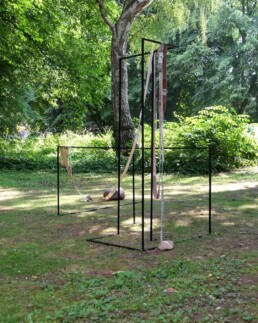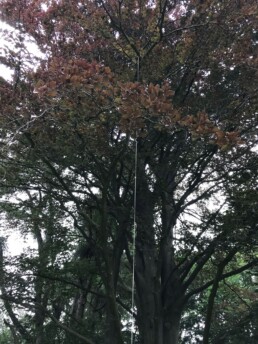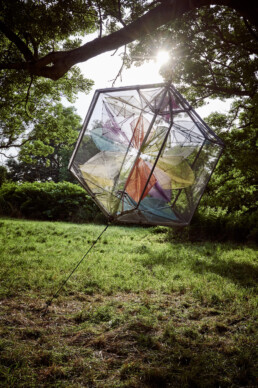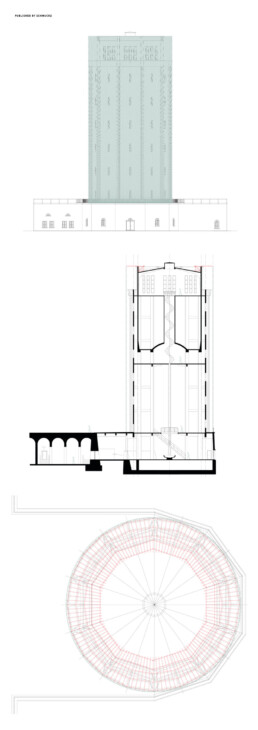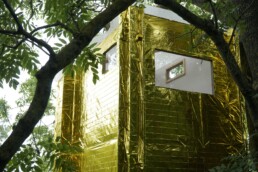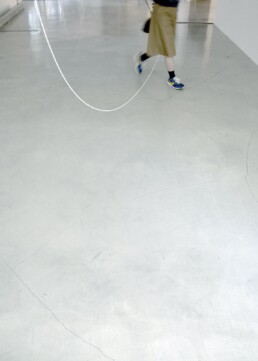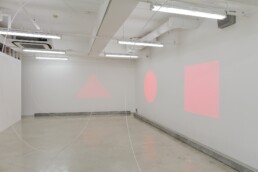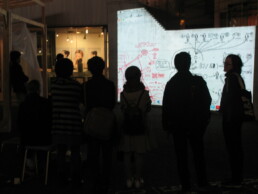PLAY MUSEUM
22
2021
Under the banner PLAY MUSEUM, SCHMUCK2 picked up the focus on architecture and jewellery from its previous project and developed a utopian contemporary „(jewellery)museum“. This project concerned itself less with planning a new building and more with drawing the vision of a museum with a series of artistic installations, actions and new digital presence.
© Thomas Häntzschel/nordlicht
With the installation of the HOCHsitz as a »hypertransmitter« (Glashagen MV) and the associated »HOCHsitzen« publication of interviews in 2010, SCHMUCK2 posed the question of the contemporary location for artistic production and action. In projects such as PLAY JEWELLERY – WEAR ARCHITECTURE: Thinking about jewellery through architecture« (Tokyo 2015) or »THINK BAUHAUS: Building Jewellery in Architecture« (Halle and Tokyo 2019), SCHMUCK2 has iteratively juxtaposed architecture and jewellery in relation to each other. The theory that architecture stands symbolically as an ornament for its surroundings (Toshimasa Sugimoto/Architectural Historian) developed finally within this discourse.
With the pandemic in the background, the ways in which we install and organize exhibitions are changing, as well as how we receive and experience them. The new forms in which content is presented — digital/real, global/local, sustainable and participatory — are also changing the architecture in which this presentation takes place: it is moving from a fixed fortress to a flexible action. In the case of PLAY MUSEUM, the architecture — the designed and bounded space — is now lost in the action, turning its role from lodge to lodger.
Keeping the format of a classical exhibition, the artists Caroline Bayer, Kai Schiemenz, Asako Shiroki, Stefan Wischnewski, as well the architect Tom Kühne, developed and installed „architecture“ or „architectural gestures“ in the midst of the Mecklenburg landscape — in the park of the old Glashagen estate and next to the HOCHsitz that, following Sugimoto’s proposal, can be interpreted as jewellery.
© Caroline Bayer, Thomas Häntzschel/nordlicht
Caroline Bayer
STREAMER / plant-dyed wool (Xanthoria Parietina, Salix Salix), found objects, foundlings, powder-coated steel / 2021
For the work Streamer Caroline Bayer worked with the locally found lichen Xanthoria Parietina. In fermentation processes lasting several weeks, this lichen reacts similarly to indigo when dyed: shades ranging from light pink to pink can be achieved on wool.
Bayer took advantage of this and then wove the dyed wool into long ribbons, which she placed almost decoratively in a fragmentary spatial situation made of steel. The implied architecture functions as a linear drawing in space. It was created in reference to the modular display system Leger und Träger developed by the architect Friedrich Kiesler in 1924. It makes it possible to present exhibits without the aid of walls and to realize exhibitions independently of the room. Bayer took up Kiesler’s design and developed a system of linear steel modules that can be repeatedly assembled to create new forms and spaces.
© Susan Pietzsch, Thomas Häntzschel/nordlicht
Kai Schiemenz
Ane Titec (im Park)/ gravel, soil, clay, pigments / 2021
„A small park with trees. A meadow where there was a manor house. A path passes by it, which itself does not provide access to it. The park is embedded in a landscape of meadows, fields and farmsteads. In the movement of its paths dwells a little theater, a movement that visitors follow. If we see the park as a museum that collects and sorts things, then the meadow speaks of the absence of the manor house.“ (Kai Schiemenz 2021)
Kai Schiemenz has created an ephemeral and equally sustainable sculpture on site from clay, earth, gravel and pigments. Water was added to compact molds in formwork, which, once removed, served first and foremost as a display for unfired vessels made of clay, shaped by the artist. At the same time, the tamped earth was weather-dependent and thus subject to a natural process of decay.
The ephemerality became part of the sculpture and thus recalled the history of the site.
According to Schiemenz, it is not possible to say unequivocally in this regard whether the process of bringing forth and that of decay is not the actual sculpture.
© Asako Shiroki, Thomas Häntzschel/nordlicht
Asako Shiroki
A twig of interweaving passages / wood, glass, silver chain, bronzes / 2021
„One day I was walking on the street, I found charming shapes of the twigs. As I had one of them in my hand, I spotted a bird’s nest over my head. It was the moment of intervening between rational collection and destined accumulation, and it was the moment of discovering passages and interweaving different worlds. A charming shape of the twig was the connection of autonomous existence. I felt that we exist in our time with many different layers of the world.“
In her work, Asako Shiroki dislocates mutual rules and assigns new relationships to events that occur simultaneously in this world. History and culture, customs, awareness of flora and fauna, also the physical phenomena between tangible and intangible things are twisted and mixed by her. She reverses and mix things-including concepts-that by rights ought to be on the reverse, reflect things in mirrors, or peel away related meanings to let things themselves start a dialogue in different contexts. Different languages are translated, folded and layered with fictions and realities in a moment that leads us to a world in which they are equated.
Not without reference to the immediate environment, the artist has turned museum content on its head for PLAY MUSEUM, without neglecting concepts such as beauty and poetry against the actual background of the project.
© Susan Pietzsch, Thomas Häntzschel/nordlicht
Stefan Wischnewski
Interspace / laundry spiders, fly hoods, mosquitonets, aluminium / 2021
The seemingly floating sculpture made of laundry spiders, fly hoods and mosquito netting is already by its material origin, naming and function on the interface between nature, animal and man. The synergistic effect of a semi-transparent appearance in this rural environment sharpens the perception on the place, which is transformed into an open air showroom. The encounter with the self-contained net sculpture and the artificial complimentary colored fabric objects moving inside, allows a closeness at a distance, familiar from museum spaces.
© Tom Kühne, Thomas Häntzschel/nordlicht
Tom Kühne
Wandelhalle Glashagen – an architectural vision for the park of the old Glashagen estate / 2021
Using the means of looking back at the history of Glashagen-Hof, taking stock and formulating the potential available on site, Kühne developed the vision of a meeting/exhibition/event venue for, among other things, regional building culture in the form of a pavilion with coffee facilities on the vacant site of the former manor house.
© Thomas Häntzschel/nordlicht, Inga Knölke
> Play Museum proposes the museum as an argument, with an architecture made of theory: flexible, volatile, undulating and capable of sheltering, hosting and generating content to put it into reality.
The diagram shows a step-by-step dynamic management of actions defining the areas of performance and influence, with the intention of promoting architecture and jewelry in a critical and speculative setting to generate working models. In the pages of the book >Play Museum an initial drawing advances towards a diagram and ends up as a map of the museum on a picnic blanket.
Diagram of the >Play Museum concept by Martí Guixé as a map of the museum on a picnic blanket.
© Studio Martí Guixé
The project PLAY MUSEUM was funded by the Stiftung Kunstfonds within the program NEUSTART KULTUR, supported by Makra Bau GmbH and the municipality of Retschow.
Think Bauhaus. Building Jewellery in Architecture
21
2019
The historic Bauhaus, which celebrated its 100th anniversary in 2019, is recognized today as the most influential educational institution in the field of architecture, art and design of the 20th century. The Bauhaus Manifesto, written by Gropius in April 1919, articulates the objectives of the Bauhaus, which include among others “to unite architecture with art and design in the service of man as a social being” (W. Franks). Within this document, Gropius describes The Building as “the ultimate goal of all visual arts” ensuing that “the ornamentation of the building was once the loftiest task of all visual arts, as they were indispensable parts of great architecture. Today the arts exist in isolation, from which they can be rescued only through the conscious, cooperative effort of all craftspeople.”
The project “Think Bauhaus. Building Jewellery in Architecture” sought a contemporary interpretation of Gropius’ way of thinking. In so doing, the project was in no way about decorating a building devoid of consideration of its architecture; rather, it was much more about a visionary interpretation of the concept of jewellery in architecture following the idea of Bauhaus and its relevance in our present time.
A project inspired from an idea developed by SCHMUCK2, was originally designed for the parking garage and water tower in Halle, as well as the Deaconess Motherhouse “Neuvandsburg” in Elbingerode (Harz), in cooperation with the Saxony-Anhalt Arts Foundation. It was presented in two competitions by the Saxony-Anhalt Arts Foundation. Ultimately the design “Reif“ created by the Japanese architect Ryuji Nakamura remained unrealized.
Within the program “Bauhaus – Open End” at the Goethe Institute Tokyo a public talk was held with Torsten Blume (Researcher, Bauhaus Dessau Foundation) + Toshimasa Sugimoto (Architectural Historian, University of Hiroshima) + Ryuji Nakamura (Architect). Moderated by Susan Pietzsch.
© Photo/Rendering by Ryuji Nakamura + Posters from the publication Think Bauhaus. Build Jewellery in Architecture
The water tower in Halle South was built in 1927-29 by Wilhelm Jost and Oskar Muy (Wayss & Freytag). Although it is a water tower where people usually don’t stay for a longer time the building has decorative features like for example, a reinforced concrete structure covered with bricks, or inside the tower a decorative pendant light, even a water fountain. Expressionism and functionalism coexisted in early Bauhaus architecture, as can be seen in the tower. For the project “Think Bauhaus. Building Jewellery in Architecture”, Japanese architect Ryuji Nakamura planned a covering of the tower with silk ribbons symbolizing decoration. The ribbons were to cover the entire building, similar to the works of Christo and Jeanne-Claude or even a dressed person. The cylindrical shape is inspired by the dance costumes designed by Oskar Schlemmer. The water tower covered with the ribbons creates a chance to reaffirm the sense that ordinary appearance of the water tower gives to the people of the city.
„Reif“ by Ryuji Nakamura and Associates 2019 (φ20.50m H33.85m – Unbuilt)
spring/summer 16_green gold
20
2018
In 2016 the two German artists Susan Pietzsch and Valentina Seidel started their project spring/summer 16_green gold at the HOCHsitz. For a week the two artists wrapped the studio in golden foil.
A temporary installation and performance that challenges gold both in art and in the context of jewellery. At the same time, however, the work also questioned places for artistic productions and interprets the concept of architecture in interplay with jewellery. Nestled in a place of yearning, for a limited time, the resulting photographic work is the artistic product that is preserved.
„For a brief moment, Valentina Seidel and Susan Pietzsch infiltrated something inexplicable into the realm of reality and created a puzzling space full of poetry in the midst of nature. Fleeting gold.“
On the occasion of the 20 years celebration Schmuck2 published a series of photographs from the project spring/summer 16_green gold by the two German artists Susan Pietzsch and Valentina Seidel.
The picture booklet is accompanied by a textbook including texts by Anne Schloen, Makiko Akiyama and an interview by Benjamin Lignel in conversation with Susan Pietzsch.
spring/summer 16_green gold – a publication on the occasion of 20 years of Schmuck2 (1997-2017)
© Photo Inga Knölke
Funded by the Ministry of Culture of Mecklenburg-Western Pomerania.
SCHMUCK2 - the praxis differs
19
2017
On the occasion of the 20th anniversary of SCHMUCK2 in 2017, the exhibition “SCHMUCK2 – the praxis differs” gave an overview on the projects of the past 20 years through a composable archive in DIY format .
In cooperation with Esther Gleuwitz (Academy of Fine Arts Nuremberg/ Jewellery Department) and Marguerite Bones (Gerrit Rietveld Academie Amsterdam/ Jewellery Department) SCHMUCK2 initiated a workshop “re-evaluate the given and taken” in parallel to the exhibition at the TAG – Tamagawa Art Gallery in Tokyo, Japan.
© Susan Pietzsch, Shunsuke Minami, Shintaro Imai
The workshop did focus on our daily objects and how we relate to them. During a limited time of the working session, participants did exchange, react to, and reveal their impressions within the context of jewellery. Works produced within the workshop became a completive part of the exhibition.
Wear Architecture
18
2015
How do jewellery and architecture relate, and what can they learn from each other? This exhibition looked to answer that question as part of the satellite program PLAY JEWELLERY – wearing, making, thinking in coincidence with the Otto Künzli exhibit at the Tokyo Metropolitan Teien Art Museum.
The project which continues further, started of with an exhibition by Japanese architects Yuko Nagayama and Ryuji Nakamura as a part of the satellite program PLAY JEWELLERY – wearing, making, thinking at (PLACE )by method in Tokyo(JP).
Nagayama and Nakamura investigated personal and public spheres to discover commonalities between architecture and jewellery and their possible interplay. They met with fellow architects Jo Nagasaka and Hideyuki Nakayama to discuss this topic beforehand in an open debate and a panel discussion. Their findings formed the foundation of this exhibit, which is part of a longer, ongoing project focusing on the relation between jewellery and architecture.
A panel of four architects; Yuko Nagayama, Jo Nagasaka, Ryuji Nakamura and Hideyuki Nakayama discussed topics that show a possible relation between jewellery and architecture.
The German art historian Dr. Anne Schloen and the Japanese architect Ryuji Nakamura discussed crossing lines between art and architecture based on their professional experience. Schloen recently co-organized the exhibition (im)possible! Artists as Architects, at the Museum Marta Herford (Germany). Nakamura is known for designing exhibition spaces and museum instillations beside his architectural approach.
PLAY JEWELLERY
17
2015
On the occasion of the Otto Künzli exhibition at Tokyo Metropolitan Teien Art Museum hold from October to December 2015, the program PLAY JEWELLERY – wearing, making, thinking was planned to promote the exhibition while offering a fresh viewpoint on jewellery through workshops, guest speakers, seminars and exhibits of the diverse styles of jewellery within Japan. PLAY JEWELLERY – wearing, making, thinking“ commissioned by Tokyo Metropolitan Teien Art Museum has been organized by SCHMUCK2 in cooperation with Makiko Akiyama and method Inc.
Curated in two parts; firstly the „main program“ and secondly the „recommended program“, the main program contained events such as the Mobile Gallery by Akihiro Ikeyama, the continuation of the Jewelry Hunt by Naoko Ogawa, the Jewellery Library by Makiko Akiyama, CECI N’EST PAS UN BIJOU – a lecture by the German art historian Dr. Anne Schloen, the screen of the SCALE OF RELATIONALITY by Monica Gaspar, Damian Skinner and Marti Guixe, the exhibition FLUX by Japanese artist Yusuke Ishikawa, the kids workshop „MAKIMAKIMAKI“ by Maki Kawawa and the SCHMUCK2 “kick off“ of the PLAY JEWELLERY – WEAR ARCHITECTURE project (including a public panel discussion and open debate as well a first exhibition by Ryuji Nakamura and Yuko Nagayama).
The “recommended program“ consisted of a large number of events developed by venues such as Center for Cosmic Wonder, Hole in the Wall, gallery deux poisson, OFS (OUR FAVORITE SHOP), Arts Chiyoda a.o., selected by the program organizers.
The “recommended program“ consisted of a large number of events developed by venues such as Center for Cosmic Wonder, Hole in the Wall, gallery deux poisson, OFS (OUR FAVORITE SHOP), Arts Chiyoda a.o., selected by the program organizers.



